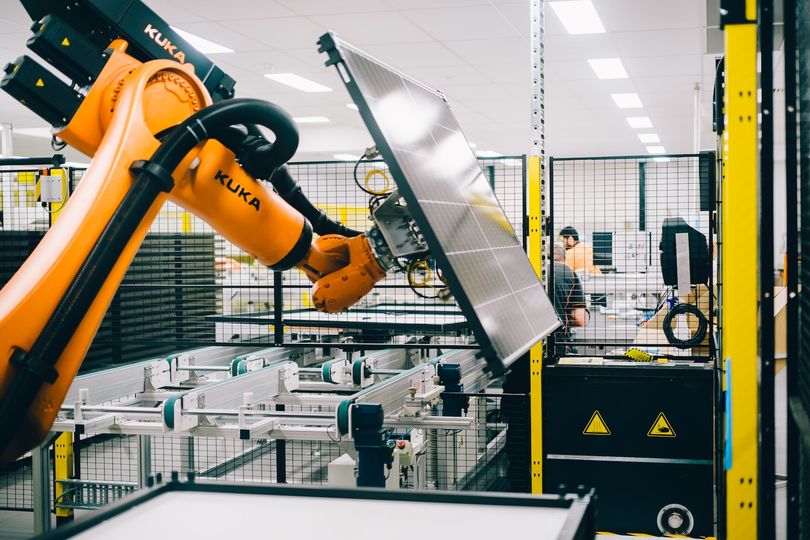The Australian federal government’s AUD 15 billion National Reconstruction Fund (NRF) – designed to boost investment in onshore manufacturing, including the production of solar panels, batteries, and hydrogen electrolyzers – will be established in law, as the bill passed through the Senate and lower house earlier this week.
Federal Industry Minister Ed Husic said the fund is “one of the largest peacetime investments in Australian manufacturing capability.” He claimed the legislation paves the way for Australia to ramp up high-value manufacturing and jobs.
“The most successful modern economies are built on strong, advanced manufacturing capability,” he said. “The NRF will help deliver this for Australia. We want Australia to be a country that makes things, a nation that has faith in its know-how and ability to get the job done.”
The NRF will deliver co-investments in projects across a range of strategic industries, including renewables and low-emissions technologies, resources value adding, agriculture, transport, defence capability, and critical technologies such as artificial intelligence and robotics.
The fund will be administered by an independent board which will make independent investment decisions, modelled on the Clean Energy Finance Corporation’s (CEFC) “co-investment” model with government planning to partner with businesses and superannuation funds to unlock further potential private investment of more than AUD 30 billion through the fund.
An initial AUD 5 billion will be provided to the fund by the federal government with a further AUD 10 billion made available in mid-2029. The government has earmarked up to AUD 3 billion of the NRF’s initial AUD 15 billion to support the manufacture of renewables and low-emission technologies.
Prime Minister Anthony Albanese said the NRF will revitalize industries that have been allowed to lag and provide a welcome boost for Australian renewable energy technology and know-how.
“Australia has all the resources that go into solar panels, batteries and other finished products,” he said. “We should be making them here. And that’s what this investment is all about. It will mean more secure jobs and more world-class products made in Australia.”
While the legislation has been widely welcomed, Glen Ryan, co-founder of Perth-based solar innovator Sunovate, said more needs to be done to provide surety for companies looking to develop clean energy technology in Australia.
Ryan, who is also behind Western Australian ocean energy company Bombora Wave Power which was moved offshore in search of financial backing and support, said government needs to establish hard targets to underpin the clean energy industry or risk loss of jobs, export potential and technology options.
“I have had to watch too many cleantech ideas including my own having to leave our shores to get a foot up,” Ryan said in a LinkedIn post. “We need hard targets to guarantee sustained project revenue opportunity and investable projects. We need hard targets to drive investments in the technology platforms to service the projects. Only then will we have the basis to consider local manufacturing opportunities.”
Melbourne-based company Wave Swell Energy recently said that it will probably not set up its tech in Australia, despite a successful trial, due to a lack of political and financial support. Ryan said this is a perfect example of the challenges facing clean energy companies.
“Here we go again,” Ryan said. “Another Australian innovative wave energy device looking overseas for ongoing support.”
Wave Swell Energy Chief Executive Paul Geason told the ABC that he was pleased with the results of a 12-month trial of its technology off the coast of Tasmania’s King Island. He said he believed that the technology would become an important part of future global electricity production.
Geason said the company is now aiming to scale up its operations but despite the success of the pilot, which was granted AUD 4.03 million in federal government funding, the company will be setting its sights on the overseas market due to a lack of incentive from both state and national governments.
“We are an Australian, a Tasmanian invention. Australia’s an important market for us … we’d dearly love to set up here,” he said. “Ideally, Australia would become home to a world-leading manufacturing capability for these wave energy converters. But right now … there are other markets in the world that are further advanced. Frankly, it would be irresponsible for us not to participate in those opportunities.”
This content is protected by copyright and may not be reused. If you want to cooperate with us and would like to reuse some of our content, please contact: editors@pv-magazine.com.




3 comments
By submitting this form you agree to pv magazine using your data for the purposes of publishing your comment.
Your personal data will only be disclosed or otherwise transmitted to third parties for the purposes of spam filtering or if this is necessary for technical maintenance of the website. Any other transfer to third parties will not take place unless this is justified on the basis of applicable data protection regulations or if pv magazine is legally obliged to do so.
You may revoke this consent at any time with effect for the future, in which case your personal data will be deleted immediately. Otherwise, your data will be deleted if pv magazine has processed your request or the purpose of data storage is fulfilled.
Further information on data privacy can be found in our Data Protection Policy.